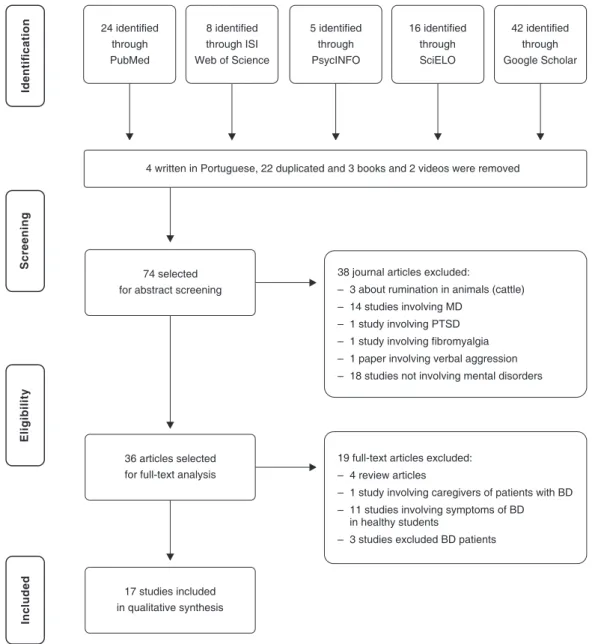Rev. Bras. Psiquiatr. vol.37 número3
Texto
Imagem




Documentos relacionados
AD = axial diffusivity; ATR = anterior thalamic radiation; BD = bipolar disorder; BD-I = bipolar I disorder; BD-II = bipolar II disorder; CC = corpus callosum; FA =
The aim of the present study was to investigate the structural correlates of a history of hallucinations in a sample of euthymic patients with bipolar I disorder (BD-I).. Methods:
It is well known that individuals with severe mental illnesses (SMI), such as bipolar disorder (BD), major depressive disorder (MDD), and schizophrenia, have a twofold
This is the first study addressing leukocyte telomere length (LTL) in a sample of euthymic bipolar disorder (BD) patients in the early and late stages of the disorder.. Although
Abbreviations : ACC, anterior cingulate cortex; AD, Alzheimer ’ s disease; ASD, Autism; BD, Bipolar disorder; Bmax, binding capacity; BPND, non-displaceable radioligand in tissue;
Results on this therapy are still controversial, although they suggest that it is related to longer affective stability and milder symptoms during follow-up (108, 109) when assessed
The Persian Bipolar Spectrum Diagnostic Scale and mood disorder questionnaire in screening the pa- tients with bipolar disorder. Arch
Objective: To compare social skills and related executive functions among bipolar disorder (BD) patients with a family history of mood disorders (FHMD), BD patients with no FHMD